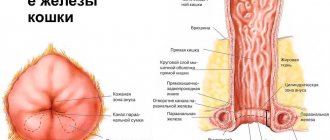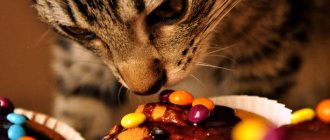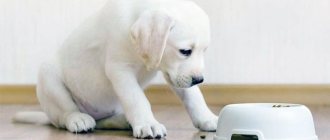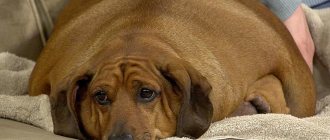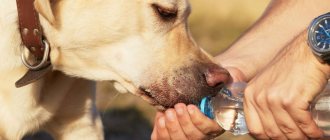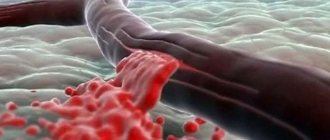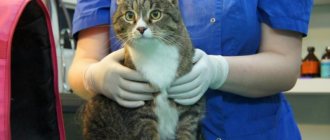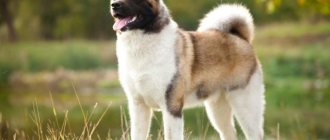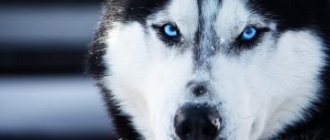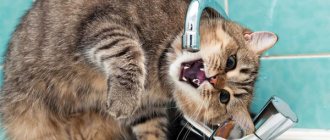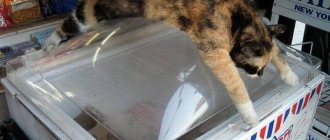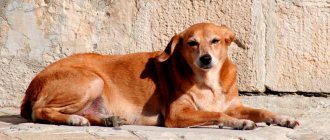10152Administration
3
Without water, warm-blooded animals have no life. Why doesn't the cat drink water? The reasons can be varied: health status, personality traits, diet, illness. This animal behavior cannot be ignored. Before taking any measures, the owner must understand the reason why the cat refuses or drinks little water. It is necessary to analyze her behavior, find out how much water she should drink and how much she actually drinks.
Fluid norm for caudates
Only a small number of owners know the daily fluid intake for their pet. Despite this, this indicator is very important and is calculated individually based on a number of criteria.
Volume by mass and activity
On average, the recommended volume is 20-40 ml per 1 kg of weight for adult animals (that is, a 5-kilogram cat will drink about 150 ml, that is, half a glass). For kittens, these numbers increase 2-3 times.
In addition to age and body weight, activity level affects the final value. The norm of mustachioed couch potatoes is lower than that of energetic lovers of regular walks on the street and frequent runs around the house.
Exceeding the norm is permissible within 15-20% of the total volume. If your pet drinks more, there is every reason to suspect something is wrong.
How to determine how much water your pet drinks
The easiest way is to use a measuring cup. Fill it to the full mark and pour the contents into a bowl. At the end of the day, pour the rest back into the glass and compare it with what you had. The resulting difference is the desired value.
If there are several cats, they will have to be temporarily isolated from each other. Otherwise, the experiment will not be indicative. To increase reliability, take several measurements on different days and calculate the arithmetic average.
About where the bowl of water should be located
The drinking bowl should not be located near washing powders, cleaning gels and similar household chemicals. Also not suitable are those places in the hallway where shoe polish will be located near the drinking bowl. Water can easily absorb the odors of these intensely scented products and become unsuitable for the cat.
How to train a cat to drink only from a bowl.
Under no circumstances should you place a water bowl near the cat's litter box - cats will not eat or drink water near the place where they defecate.
Why the cat doesn't drink water - non-dangerous reasons
If a cat refuses water, then first of all it is necessary to find out the reason for the loss of their interest. If there are no alarming symptoms and the usual behavior is maintained, the problem lies in something harmless. In this case, you can deal with it yourself.
Don't like the bowl
The animal may not like the material and shape of the product. Plastic bowls absorb odors and quickly accumulate bacteria, giving their contents an unpleasant taste. Metal has a slightly different problem. It reflects light rays, so the cat may be frightened or confused by the glare.
A bowl that is too narrow is also rarely popular. It injures the vibrissae. Also, we must not forget about the presence of dirt. Drinking stagnant liquid is a rather dubious pleasure.
I don't like the watering place
Not all animals like to drink in the kitchen. If the problem lies in the wrong location, then you will have to guess the ideal location through trial and error.
Neglect of the bowl may also be due to the location of the feeder being too close. Because of this proximity, food particles constantly end up in the water. It is also worth considering that predators prefer to share the place where they catch and eat prey with their “watering hole.”
Too noisy rooms, as well as close proximity to cleaning products and a cat litter box, are also not welcome. For this reason, the living room and bathroom with toilet are the most dubious options for placing a drinking bowl.
Gets enough water from feed
Pieces of spider meat jelly and canned pates for cats contain up to 80% of the daily moisture requirement. There are no problems when feeding “natural”, since internal reserves are regularly replenished with the following products:
- liquid porridge;
- dairy products;
- fish, meat and offal;
- gravies and broths;
- fruit and vegetable juices.
Animals that do not eat dry food need less. They drink less often and less, but in their case it is completely natural.
Drinks in a place unnoticed by the owners
Sometimes the problem is the presence of external sources. A mustachioed pet can guerrilla in the bathroom, aquarium and even in the toilet.
Some animals lick a freshly washed floor with great enthusiasm, but it is better to wean off this habit immediately. Otherwise, the cat risks being poisoned by the detergent.
Their love for taps is explained by the fact that in natural conditions wild cats try to avoid stagnant bodies of water. Unlike rivers and lakes with underground springs, such “watering places” contain a lot of dirt and microbes.
Coming out of anesthesia
Generally, recovery from anesthesia is accompanied by loss of appetite, but sometimes the administered drug provokes a short-term (up to 12 hours) refusal to drink.
A temporary lack of food is harmless to the body, but you should be careful with water. Most often, interest in her appears within 2-3 hours after returning home. Before the usual activity appears, the pet is fed strictly from a syringe, since if it is consumed independently, it may choke.
How can this problem be solved?
First we need to discuss water quality. Cats will always prefer fresh, clean water to stagnant or cloudy water. Therefore, the water should be changed daily or even several times a day - it will only be better.
We must not forget that the water in the bowl can become contaminated not only from dust or the ingress of some foreign objects, but also from cat saliva, which gets there in sufficient quantities after the first drink.
If a dog lives in the house with a cat, then it will probably drink from the same bowl, which can also affect the cat’s attitude towards such water. In this case, you should block the dog's access to the cat's drinking bowl. For example, a bowl can be placed on a windowsill.
One of the unsuccessful options for a water container is a double bowl into which both food and water are poured. In bowls with a similar device, food particles often fall into the water, contaminating it. The same thing happens when the water bowl is too close to the food bowl. Also, you should not use the same bowl for eating and drinking; in other words, the drinking bowl must be a separate container.
Care should be taken to ensure that the water does not contain any impurities and does not have any repulsive odors. Perhaps you should refrain from using various detergents and cleaning products, since they leave odors that the cat will not necessarily like. Although it can be argued that she will not like them for sure.
Why the cat doesn't drink water: dangerous reasons
If the cat does not drink water from the bowl at all and you are completely sure that there are no foreign sources, pay attention to his well-being. The presence of accompanying symptoms is a good reason to contact a veterinarian, indicating the presence of pathology.
Oral diseases
Any inflammation and neoplasms on the mucous membranes make swallowing difficult. In this case, thirst remains, so the pet can sit at the bowl with a sad expression and chew only on the healthy side. A similar picture occurs with pain in the teeth.
In addition to behavioral changes, the presence of dental diseases can be determined by the appearance of the teeth and soft tissues. If dark plaque, redness, ulceration and an unpleasant odor appear, the cat should be scheduled for examination at a veterinary clinic.
Gagging
During attacks of nausea and immediate vomiting, drinking is very problematic. If your pet bends over in another attack, then first of all it needs to be checked for symptoms of poisoning:
- increased heart rate;
- hard breath;
- dilated pupils;
- trembling of limbs;
- drowsiness and apathy;
- loss of balance;
- blanching of mucous membranes;
- nosebleeds;
- temperature change;
- stool disorder.
The clinical picture depends on the type of poison, its quantity and the strength of the cat’s immunity. It is not necessary to wait for all of the above. Even 2 symptoms are enough to contact a veterinarian.
Other possible causes of vomiting include foreign objects, infections, helminthiasis and various diseases of the internal organs. With the help of gagging, the body tries to get rid of toxins, as well as push out an object stuck in the throat.
Hydrophobia, including rabies
Hydrophobia, or hydrophobia, develops due to spasms of the larynx. Thirst persists, but the sick animal consciously refuses water, fearing to choke.
The main cause of hydrophobia is rabies. Infection can be identified by a sudden change in behavior, perverted appetite and profuse drooling. Symptoms develop progressively.
The main danger of rabies in cats is the lack of specific treatment. The infected person also poses a danger to everyone around him.
If alarming symptoms appear, it must be isolated and transferred to veterinarians or employees of the city trauma center. If the pet is vaccinated, then if a second dose of the vaccine is administered in a timely manner, it can survive.
Convulsions and paralysis
Convulsions and paralysis do not develop on their own. They are always provoked by concomitant diseases.
Both disorders affect the cat's coordination and behavior. Involuntary muscle contraction while drinking leads to hydrophobia, and if the paws fail, the ability to freely move to the kitchen disappears.
Convulsions and paralysis are similar in initial symptoms. You can suspect something is wrong by the pet’s aloofness (hiding in secluded corners) and unusual aggression when trying to pick it up or just pet it.
Dangerous symptoms: when should you see a doctor?
Veterinary care is necessary if the cat hardly drinks water or refuses it at all, and the following signs appear:
An animal becomes seriously ill if it develops a specific discharge from the eyes and nose.
- Temperature increase.
- Anxiety, changes in behavior and taste preferences.
- The cat often sits down to pee and urinates blood.
- Pale and dry mucous membranes.
- Constantly meows in pain.
- Vomiting, diarrhea.
- The appearance of ulcers and bleeding in the mouth.
- Frequent swallowing, the cat makes strained attempts to push something out of the mouth.
- Hoarse nasal breathing, snoring during sleep.
- Discharge from nose and eyes.
- The cat constantly spends time lying down, does not get up, and refuses to play.
- Difficulty breathing or shortness of breath.
- Heart dysfunction.
- Decreased sensitivity of the limbs.
- Stickiness, viscosity of saliva.
- Lack of skin elasticity.
- Dramatic weight loss.
What to do if your cat doesn't drink water
If the cat does not drink water from the bowl at all, then it is not so difficult to understand what to do. To do this you need to find out the reason:
- Wrong material and bowl size. Buy a new glass or ceramic water bowl, making sure that it will not damage your pet's whiskers.
- Dissatisfaction with the watering place. Place containers throughout your home to find what works best. If your animal gravitates towards running water, then it makes sense to purchase a drinking fountain.
- Lack of cleanliness. Wash the bowl daily, but without using detergent. Remember that the water should be changed every day, and in the hot season - twice a day.
- I don't like the container itself. Don't get stuck on one option. Try attracting your pet with their own cup, container or tall bucket.
- Consequences of anesthesia. The situation will normalize on its own when the drug is completely out of the body.
- I don't like the water itself. You should not give cats running water - choose filtered or bottled liquid. Otherwise, there is a risk of not only refusing to drink, but also kidney disease.
For diseases of the oral cavity, it is recommended to use warm water heated to 30 degrees. Lower temperatures increase pain, and higher temperatures burn the mucous membranes. Despite the effectiveness of this method, if a disease is suspected, the animal should still be shown to a veterinarian.
How can you tell if your cat is dehydrated?
Common symptoms of dehydration are:
· Sunken, dry eyes · Pale and discolored gums · Loss of appetite · Lethargy and drowsiness
The easiest way to detect dehydration in a pet is to check the elasticity of its skin. Lightly pinch the skin between your cat's shoulders and then release. If there is enough fluid in the animal's body, the skin will quickly return to its original position. If dehydrated, it will very slowly and gradually “slide” back.
Dehydration can be deadly. If you are unable to encourage your pet to drink water on your own, you may need help from a veterinarian. He will put the animal on a drip and find out the causes of the problem.
Should you force your pet to drink?
The need for forced drinking depends on the reason for refusing to drink and general well-being. In the absence of pathologies, such pressure has the opposite effect. It is much better to try the recommendations described above.
If your pet recovers from anesthesia, then he will have to be fed from a syringe without a needle for about a day. Otherwise, there is a risk of dehydration. The same applies to the listed disorders, with the exception of rabies.
About individual cat preferences
Both humans and cats have such preferences. Some cats like to have several drinking bowls in the house, and they are located in different places. Others definitely need deep and large containers. To determine exactly what views a particular cat adheres to this subject, it is enough to simply offer her a choice of several different containers. They should be placed in one place and filled with the same water.
Observe and control your cat's behavior.
After this, you should carefully monitor the cat for several days. If she still refuses to drink water from there, you can try filling the bowls with bottled water or simply changing the water more often. When the cat chooses one bowl (and cats, as a rule, prefer only one), you can remove the rest, leaving only this one. After this, you can try to place several of these bowls in different areas of the apartment or house, if, of course, the need arises.
If you find an error, please select a piece of text and press Ctrl+Enter.
Source
Hello saucer!
A small kitten can be compared to a human child, although this comparison is not very correct. But why is such an allegory given? We gradually accustom our children to other foods, but at the same time he continues to eat mother’s milk or special formulas. You should also behave with small kittens. But if there is no cat, and the baby is still small, not even 3 weeks old, then you will need to feed the kitten milk from a pipette or even from a bottle.
Features of nutrition during the transition period
It is very important to introduce any complementary foods gradually. First, make a simple liquid semolina porridge with diluted milk; no sugar should be added.
After the kittens' stool has returned to normal, you can make liquid milk porridge from rice, rolled oats and buckwheat. In parallel with such food, you can also give low-fat cottage cheese. We must remember that everything that kittens eat will not be eaten right away, so you need to put very little food on the plate.
To eat, kittens can approach the bowl very often during the day, but the frequency should not exceed 6 times. Closer to the age of two months, babies need to be taught to eat more solid foods: boiled meat and fish, sometimes you can give them fresh, but be sure to make sure that they don’t get large bones. The pieces of food should be small; sometimes you can mix pieces of fish with any porridge cooked in water. It is best to use ready-made canned food for young children, but you need to carefully monitor them when they begin to eat such food.
How to train to a bowl?
Now we come to the most important question: when and how to accustom a kitten to a saucer and how long this procedure will take. As mentioned earlier, kittens begin to be interested in the saucer at three weeks of age, or rather, they show curiosity about the food of adult cats. Therefore, this particular age is considered one of the best for teaching a baby to eat from a plate.
At first, the baby will constantly snort and sneeze with milk bubbles. This is due to the fact that he is just beginning to comprehend the science of lapping, because quite recently he only sucked his mother’s milk. You can also sometimes see him reaching directly into the bowl with his paws; this must be stopped immediately.
To do this, you need to take it out of there, wipe its paws with a napkin and place it near the bowl. The next time he gets ready to climb into the saucer again, you need to hold him back. This way you can teach the kitten that limbs should not be in the food.
The kitten started eating
Any mother is naturally endowed with a wonderful instinct of caring for her offspring. Helpless babies will not survive without a reverent mother's attitude. And if in the human world a mother’s care has no expiration date, then cats are ready to let their little ones go from their hearts after just 3 weeks. In the wild, cubs immediately learn to get their own food, but kittens living in an apartment have to rely on their owner. Inexperienced owners have no idea whether to allow the kitten to eat on its own or what to include in its diet. This baby is so small and fragile that mistakes are unacceptable. So, how to properly organize the independent feeding of a fluffy mustache?
Age-related nuances of the cat’s “table”
Cats allow their children to live independently early, but are ready to provide them with milk for up to 2 months if necessary. Domestic kittens are usually ready for complementary feeding after 3 weeks of life. In addition, the children are growing rapidly, and it is becoming increasingly difficult for the cat mother to feed this horde.
At the age of 1-1.5 months, the kitten should receive warm liquid food 5-6 times a day. The following dishes can be placed on the cat’s “table”:
- baby meat and vegetable puree;
- semolina porridge with milk without sugar;
- mashed boiled yolk (a little);
- low-fat cottage cheese.
By 2 months, when the first baby teeth emerge, feline babies are ready to try solid food. But you shouldn’t exclude liquid food, as it is good for digestion. Don’t forget: the kitten is growing and developing rapidly, and every day its need for nutrients increases. The better nutrition that is “invested” in the baby at this age, the stronger his health will ultimately be. The following products are suitable for the table:
- lean boiled meat;
- children's cottage cheese;
- cereals (oatmeal, buckwheat, rice);
- chicken yolk;
- fermented milk products and milk;
- low-fat cheese without salt;
- natural yoghurts.
By 3 months, the baby can be switched to dry cat food. Don't skimp on your pet's health. Economy class food is often made up at random from meat and bone waste; it will not be able to fully saturate the cat’s body with the necessary substances. It is better to buy super premium kitten food. From the owner's refrigerator, a three-month-old baby will benefit from the following delicacies:
- lean boiled meat, cut into pieces;
- offal (beef heart/liver);
- boiled sea fish;
- fermented milk cuisine;
- grated vegetables and fruits;
- salad of finely chopped greens and olive oil;
- chicken yolk;
- cereals (rice, buckwheat, millet, rolled oats);
- natural yogurt.
To prevent your cat from being capricious in the future, you need to accustom him to the right table from childhood. It is not uncommon for cats to become hooked on a certain type of food and refuse others that are no less healthy. One regular dish cannot contain all the vitamins a cat needs. And if you want your pet to be an omnivore, teach him to eat fruits, vegetables and cereals from early childhood.
Newborn without mother
It happens that for some reason newborn babies are left without breast milk. Then the owner will face a real test, which will take a lot of time and effort, but will save the little cat’s life. The participation of a veterinarian in this feat is mandatory. A specialist will help you choose food and explain all the nuances of replacing cat milk with cow milk.
Up to 3-4 weeks, babies are fed 8 times a day using a pipette. The milk must be warm (but not higher than 37 degrees). If you drop it on the back of your hand, you can determine the temperature. The skin should not be hot. From 1 to 2 months, you can continue to feed the kitten with milk using a pacifier. After feeding, experts recommend gently massaging the cat's belly so that the digestive system works correctly.
The most important thing in feeding newborn kittens is not to overfeed the baby. Excess milk has an extremely detrimental effect on the fragile health of the baby.
In a sense, it is better to underfeed the baby than to risk his condition. The veterinarian will help determine the dosage of food.
When is complementary feeding introduced and what to feed?
To accustom a cat to normal food, additional food to cat milk should be introduced no earlier than the baby is one month old. Breastfeeding cannot be denied unless there are contraindications for the offspring and the nursing mother. Dry food is suitable - high-quality any brand or specialized for certain breeds, which is eaten by Scots, British, Persians, Siamese or Maine Coons. If the kitten does not eat solid food, you can force it by spreading it a little in the bowl. Then beef is introduced, later replacing it with chicken or turkey, low-fat cottage cheese, low-fat varieties of fish without bones and fins, boiled vegetables (except broccoli, tomatoes, onions and garlic). Small pets should definitely receive chicken yolk and greens. Veterinarians do not recommend mixing portions of regular food with industrial food, as this negatively affects digestion.
Is milk acceptable in the diet of an adult cat - benefit or harm?
Veterinarians and nutritionists advise excluding milk from a cat’s diet from 6 months, and some experts suggest doing this earlier - as early as 4 months.
This is due to the fact that this product contains a special element in huge concentration - milk sugar. Its breakdown is carried out in the cat's body under the influence of the enzyme lactose.
The body of any mammal produces quite a lot of it in infancy and childhood and produces practically none at all in adulthood.
This theory is confirmed by almost all experts - product rejection occurs in most individuals, but there are exceptions to the rule.
Some adult and even elderly pets happily drink milk without any consequences for the proper functioning of the body. This is due to the individual characteristics of specific individuals. This means that it is in their body that a lot of lactose is still produced and the breakdown of milk sugars occurs successfully.
All adult animals like the taste of milk, but numerous studies have confirmed that it does not bring any benefit to the pet. Some cats, even in the absence of dyspeptic symptoms, may develop an allergic reaction when feeding them milk.
Thus, despite the assertion of some scientists about the indispensability of cow's milk in the diet of cats, most experts recognize this product as harmful and unacceptable in the diet of adult pets:
- The high calorie content of milk can lead to imbalance in the body and ultimately lead to obesity.
- The high content of casein and lactose does not allow the product to be completely absorbed.
- An extremely high concentration of elements that are unacceptable in the diet of an adult animal contributes to the development of allergies.
- Intolerance to milk sugars by the cat's body leads to indigestion, flatulence, bloating, indigestion, chronic diarrhea and dehydration.
